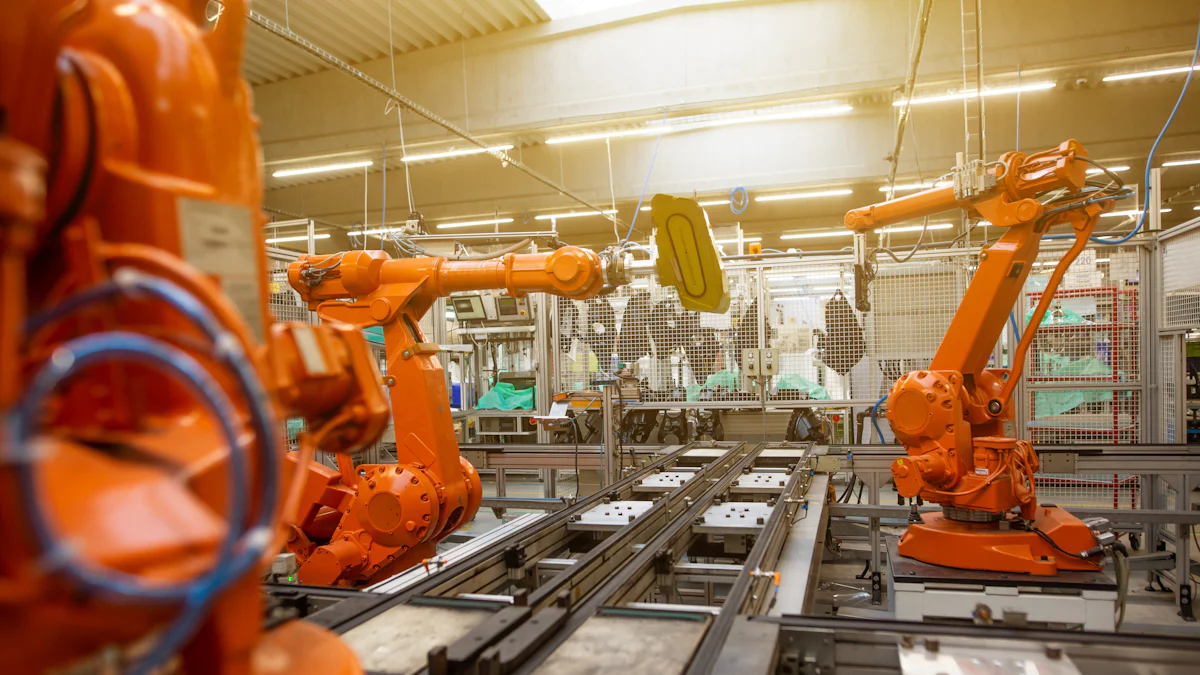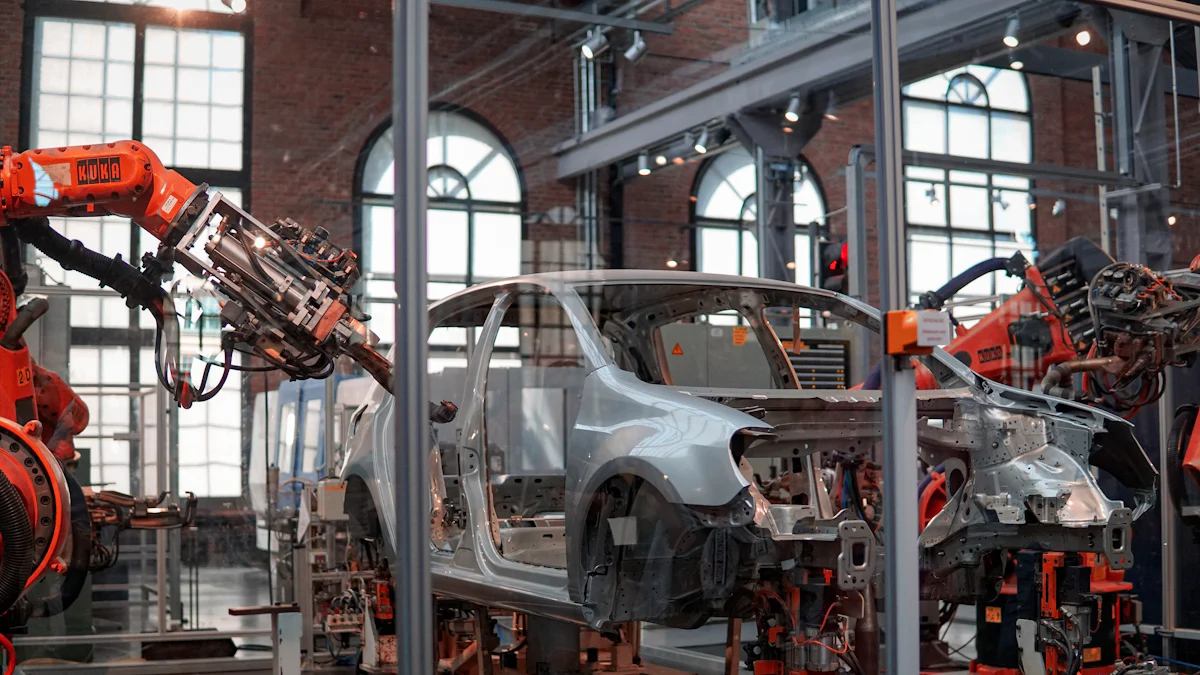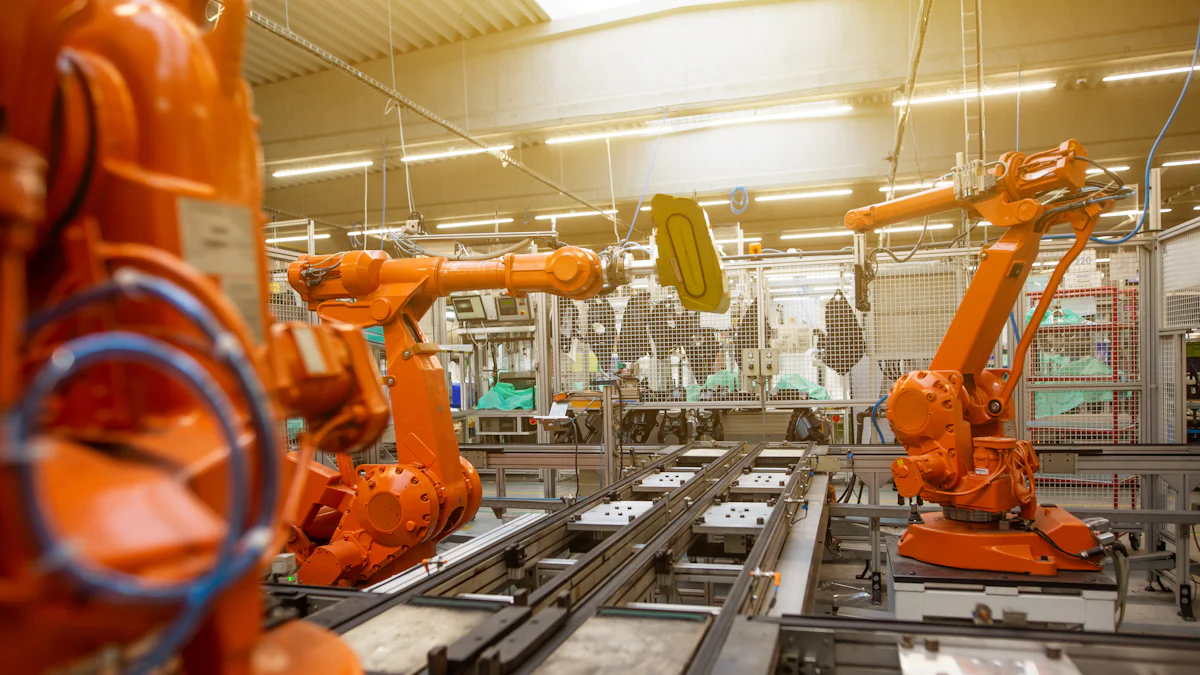Global Manufacturing: Current Trends and Future Challenges

Global manufacturing plays a crucial role in the world's economy, contributing between 13.7% and 17.5% of global GDP since 1970. The industry experienced a severe slump during the first half of 2020 due to global lockdowns but showed signs of recovery later in the year. Understanding current trends and future challenges is essential for navigating this dynamic landscape. Key trends include the digitization of factories and the transformation of supply chains. Economic headwinds are expected to impact output by 2024, making strategic planning vital.
Current Trends in Global Manufacturing

Technological Advancements in Global Manufacturing
Automation and Robotics
Automation and robotics have revolutionized global manufacturing. Companies now use advanced robots to perform repetitive tasks with precision. This technology reduces human error and increases production speed. Factories worldwide have integrated robotic arms for assembly lines, enhancing efficiency. The automotive industry, for instance, relies heavily on automation for welding and painting processes.
Internet of Things (IoT)
The Internet of Things (IoT) connects devices and systems within manufacturing environments. IoT enables real-time monitoring and data collection. Manufacturers use IoT to track equipment performance and predict maintenance needs. This connectivity improves operational efficiency and reduces downtime. Smart factories leverage IoT to optimize production processes and ensure seamless communication between machines.
Artificial Intelligence (AI)
Artificial Intelligence (AI) plays a pivotal role in global manufacturing. AI algorithms analyze vast amounts of data to improve decision-making. Companies use AI for quality control, detecting defects in products with high accuracy. AI also enhances supply chain management by predicting demand and optimizing inventory levels. Leading firms like Alibaba and Lenovo invest heavily in AI to streamline operations and boost productivity.
Sustainability and Green Manufacturing
Renewable Energy Integration
Renewable energy integration is a significant trend in global manufacturing. Companies adopt solar and wind energy to power their operations. This shift reduces reliance on fossil fuels and lowers carbon emissions. Manufacturing plants install solar panels and wind turbines to generate clean energy. The transition to renewable energy aligns with global sustainability goals and promotes environmental responsibility.
Waste Reduction Techniques
Waste reduction techniques are essential for sustainable manufacturing. Companies implement strategies to minimize waste during production. Recycling and reusing materials help reduce environmental impact. Advanced technologies enable manufacturers to repurpose by-products and reduce landfill waste. These practices contribute to a circular economy and enhance the industry's eco-friendly image.
Global Supply Chain Dynamics
Impact of Trade Policies
Trade policies significantly influence global manufacturing. Governments impose tariffs and trade restrictions that affect supply chains. Companies must navigate these policies to maintain competitiveness. Trade agreements and regulations shape the flow of goods across borders. Manufacturers adapt to changing policies to ensure smooth operations and avoid disruptions.
Regional Manufacturing Hubs
Regional manufacturing hubs play a crucial role in global supply chains. Countries like China, India, and Vietnam have become key manufacturing centers. These hubs offer cost advantages and skilled labor. Companies establish production facilities in these regions to meet global demand. The strategic location of manufacturing hubs ensures efficient distribution of products worldwide.
Future Challenges in Global Manufacturing

Economic Uncertainty
Market Volatility
Market volatility poses a significant challenge for global manufacturing. Fluctuations in demand and supply can disrupt production schedules. Manufacturers must adapt quickly to changing market conditions. Economic factors such as geopolitical tensions and trade disputes exacerbate this volatility. Companies need robust strategies to mitigate the impact of sudden market shifts.
Currency Fluctuations
Currency fluctuations create additional hurdles for global manufacturing. Exchange rate instability affects the cost of raw materials and finished goods. Manufacturers operating in multiple countries face financial risks due to currency variations. Effective currency management strategies are essential to maintain profitability. Hedging and other financial instruments can help mitigate these risks.
Workforce Issues
Skill Gaps
Skill gaps present a major obstacle in the global manufacturing sector. Rapid technological advancements require a workforce with specialized skills. Many manufacturers struggle to find employees with the necessary expertise. Investment in training and education programs is crucial. Collaboration with educational institutions can help bridge the skill gap.
Labor Shortages
Labor shortages further complicate global manufacturing operations. Aging populations in key manufacturing regions contribute to this issue. Companies must attract young talent to sustain their workforce. Competitive wages and benefits can help draw new employees. Automation and robotics can also alleviate some labor shortages.
Regulatory and Compliance Pressures
Environmental Regulations
Environmental regulations impose strict requirements on global manufacturing. Governments worldwide enforce policies to reduce carbon emissions and waste. Compliance with these regulations often requires significant investment. Manufacturers must adopt sustainable practices to meet regulatory standards. Failure to comply can result in hefty fines and reputational damage.
Trade Compliance
Trade compliance remains a critical concern for global manufacturing. Tariffs and trade restrictions impact the movement of goods across borders. Companies must navigate complex trade laws to avoid penalties. Staying updated with changing regulations is essential. Effective trade compliance strategies ensure smooth international operations.
Strategies to Overcome Future Challenges
Innovation and R&D
Investment in New Technologies
Investment in new technologies remains crucial for global manufacturing. Companies must allocate resources to cutting-edge innovations. Advanced robotics and automation can enhance productivity. Artificial Intelligence (AI) can optimize supply chains and improve quality control. The Internet of Things (IoT) can enable real-time monitoring and predictive maintenance. These investments will ensure competitiveness in a rapidly evolving market.
Collaboration with Research Institutions
Collaboration with research institutions offers significant benefits. Partnerships with universities and research centers can drive technological advancements. Joint projects can lead to the development of innovative manufacturing processes. Access to academic expertise can provide insights into emerging trends. These collaborations can also facilitate the transfer of knowledge and skills. Companies can stay ahead by leveraging academic research.
Workforce Development
Training and Education Programs
Training and education programs are essential for addressing skill gaps. Manufacturers must invest in upskilling their workforce. Specialized training can equip employees with the necessary expertise. Educational programs can focus on emerging technologies and industry best practices. Collaboration with educational institutions can enhance these efforts. A well-trained workforce can adapt to technological advancements and improve operational efficiency.
Attracting Young Talent
Attracting young talent is vital for sustaining the workforce. Competitive wages and benefits can draw new employees. Companies must create appealing work environments. Opportunities for career growth and development can attract young professionals. Engaging with educational institutions can help identify potential recruits. A focus on diversity and inclusion can also enhance talent acquisition efforts. Young talent can bring fresh perspectives and drive innovation.
Risk Management
Diversification of Supply Chains
Diversification of supply chains can mitigate risks. Companies must avoid reliance on a single source or region. Multiple suppliers can ensure continuity during disruptions. Regional manufacturing hubs can offer alternative production sites. Strategic partnerships can enhance supply chain resilience. Diversified supply chains can adapt to changing market conditions and regulatory environments.
Financial Hedging Strategies
Financial hedging strategies can protect against currency fluctuations. Companies must implement measures to manage exchange rate risks. Hedging instruments like forward contracts and options can stabilize costs. Effective currency management can maintain profitability. Financial experts can provide guidance on optimal hedging strategies. Robust financial planning can safeguard against economic uncertainties.
Staying updated with trends and preparing for challenges remains crucial in global manufacturing. Proactive strategies ensure sustainable growth. Industry stakeholders must collaborate and innovate. Embracing a failure-forgiving culture fosters innovation. Investment in new technologies and workforce development drives progress. A focus on sustainability and compliance enhances competitiveness. The manufacturing sector must adapt to economic uncertainties and regulatory pressures. Strategic planning and risk management safeguard operations. Continuous improvement and resilience build a robust manufacturing landscape.
See Also
Navigating Manufacturing Success: Essential Strategies
Efficient Fixes for High-Tech Manufacturing's Supply Chain Challenges
Unlocking Triumph: High-Tech Manufacturing Consulting Demystified
Collaborative Innovation: Strengthening Supplier Bonds in High-Tech Manufacturing
